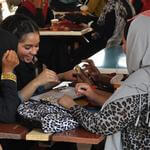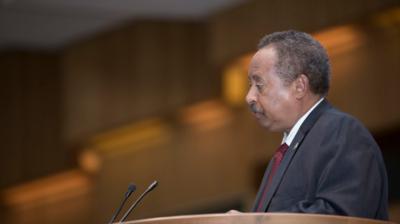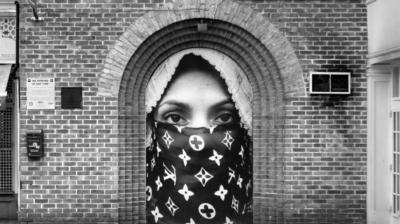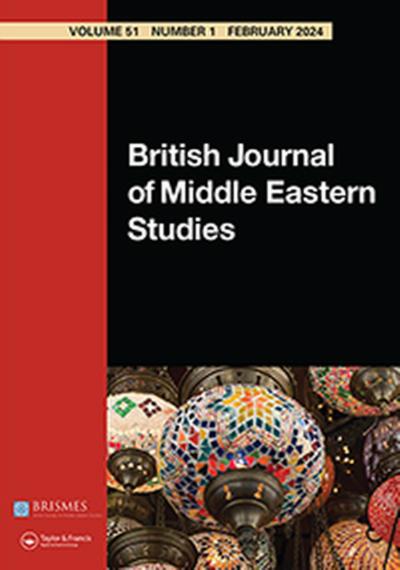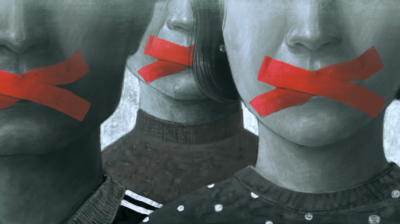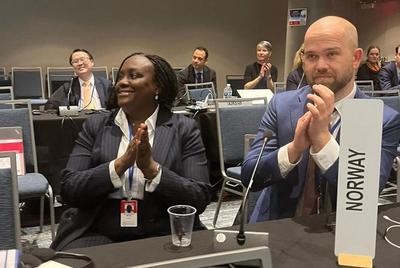Paper tiger law forbidding FGM in Sudan
Female genital mutilation (FGM) is still a common practice in Sudan. Nine out of ten women have been subjected to this practice.
In 2009, a proposed ban on FGM in the National Child Act miserably failed to materialize. In spite of the failure of a national law against FGM, with extensive funding from UNICEF and UNFPA, several of Sudan’s eighteen states have criminalized this harmful traditional practice.
This CMI Brief is based on a Sudan Working Paper titled “Weak law forbidding female genital mutilation in Red Sea State, Sudan”. The Brief has been published as an article published in open democracy March 2017.
One of these states is Red Sea, located in eastern Sudan. Red Sea is known for being extremely conservative when it comes to women’s rights, and FGM is widely practiced. We chose to investigate the criminalization process in Red Sea out of a genuine desire to study a positive example of a state that had managed to introduce a ban on FGM against all odds. Instead, we found a “paper tiger” law that does not protect girls against FGM. While the law is a political compromise cleverly designed to please stakeholders, girls at risk of undergoing FGM remain unprotected.
Criminalizing FGM in Sudan
FGM includes any procedure involving partial or total removal of the female external genitalia or other injury to the female genital organs for non-medical reasons. It is a harmful traditional practice, which reflects deep-rooted inequality between the sexes and constitutes an extreme form of discrimination against women. Numerous international and regional human rights treaties and conventions condemn the practice.
Eliminating FGM is part of the United Nations sustainable development goal 5 – to achieve gender equality and empower all women and girls. One of this goal’s targets is to “eliminate all harmful practices, such as child, early and forced marriage and female genital mutilation”. The World Health Organization estimates that more than 200 million girls and women worldwide have been subjected to FGM and that approximately three million girls are at risk each year.
FGM is mostly concentrated around 29 countries in Africa and the Middle East: Egypt, Ethiopia, Kenya, Nigeria, Somalia, and Sudan account for 75 percent of all cases worldwide.
Since the 1995 Beijing platform of action, criminalizing FGM has been high on the international agenda. Of the 29 countries where FGM is common, Sudan is one of the few that has not yet nationally criminalized the practice.
The least extensive form of FGM in Sudan is called “Sunna,” which is an Islamic term referring to Prophet Mohammed’s teachings and actions and it typically involves partial or total removal of the clitoris. The most serious – infibulation – is referred to in Sudan as pharaonic circumcision and it involves cutting and bringing together the labia minora and/or the labia majora to create a type of seal and then stitching together the cut edges of the labia.
Sudan was actually the first African country to introduce legislation against genital mutilation. This happened in 1946 under British colonial rule, when infibulation was prohibited through a supplement to the Criminal Act.
However, in 1983, when Sharia law was introduced, the article prohibiting FGM was removed from the Criminal Act. With funding from (in particular) the UNFPA and UNICEF’s joint program “Female Genital Mutilation/Cutting (FGM/C): Accelerating Change “(UNFPA and UNICEF’s anti-FGM program) an initiative was taken to criminalize all forms of FGM in Sudan as part of the promulgation of a new National Child Act in 2008.
UNFPA and UNICEF’s joint FGM program is the largest global program with an aim of eradicating the practice. The program seeks to protect women and girls from FGM using a rights-based and culturally sensitive approach in Sudan and sixteen other countries. The joint program has pushed for and funded initiatives both at national and regional levels to criminalize FGM in Sudan.
Under the guidance of Sudan’s Ministry of Social Welfare, Sudan’s National Child Welfare Council took the lead in drafting a new National Child Act; a process that started in 2007. Article 13 of the draft law proposed in 2009 criminalized FGM in all its forms. Advocates for criminalization used Islamic arguments that had support from some religious leaders such as Abdel Galil Al Karruri.
During our fieldwork in Khartoum in 2015, several individuals explained in interviews (i) that Islam forbids doing harm to a female’s body and (ii) that medical evidence shows that FGM causes extensive damage to women’s bodies and minds.
All the required committees approved the draft law before it was presented to the Council of Ministers. However, prior to this meeting, religious leaders convinced President al-Bashir that article 13 was against Sharia, and he subsequently ordered its removal.
According to Nafisa Bedri at Ahfad University for Women, “this decision followed a fatwa of the Islamic Jurisprudence Council which called for a distinction to be made between the various forms of FGM”. The fatwa called for a distinction to be made between pharaonic circumcision and the Sunna type.
Even though the conservative religious leaders and Salafists support the eradication of pharaonic circumcision, which they regard as backwards and un-Islamic, they simultaneously claim that the Sunna version is Islamic and that criminalizing it would be in opposition to Sharia.
When the National Child Act reached the National Assembly, it was without an article criminalizing FGM. Women and child rights activists protested the annulment of article 13 in vain.
In spite of the religious conservatives’ success in stalling the passage of anti-FGM legislation at the national level, several states have passed laws prohibiting FGM, including South Kordofan, South Darfur, Gedaref, and Red Sea.
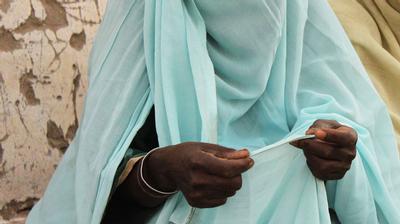
Criminalizing FGM in Red Sea, eastern Sudan
We have followed efforts to criminalize FGM at Sudan’s national level for several years, and we have conducted fieldwork in Sudan on multiple occasions since the proposal to ban FGM was first introduced in 2008.
Numerous representatives of UN agencies, the National Child Welfare Council, and Sudanese government institutions, as well as women’s rights activists in Khartoum have told us that, despite failure to pass anti-FGM legislation at the national level, they have succeeded in criminalizing FGM at the state level.
While UNFPA and UNICEF claims that six states have criminalized FGM. However, our interview data suggests not only that this number is exaggerated, but also that the law in Red Sea is a “paper tiger” – that is, a law on paper that does little in practice to change the lives of girls in Red Sea.
Criminalization of FGM in the Red Sea started in parallel with the national process. In 2007, the Red Sea managed, surprisingly enough, to criminalize all forms of FGM without any visible opposition in its regional parliament. However, after the law was adopted, tribal leaders of the Beja group – by far the largest ethnic group in Red Sea – protested against it.
The Beja group practices infibulation, but refer to it as kushabi, which the group believes preserves honor, keeps away evil spirits and diseases and is compatible with Islam. The group conducts the procedure before the end of a girl’s first birth year. The Beja group’s tribal mobilization against the law culminated in a repeal of the article of the 2007 law that had criminalized all types of FGM.
The fight for criminalization of FGM did not stop, however. In 2009, local media reported that a 40-day-old girl died after being cut. The case was reported to the police, but the girl’s family refused to give the name of the responsible midwife. This case fueled another attempt to criminalize FGM in Red Sea.
With pressure and financing (particularly from the UNFPA and UNICEF anti-FGM program), a new attempt to criminalize the practice was made in 2011, and activists and international actors interviewed in Khartoum described this attempt successful.
According to a representative of UNICEF we interviewed in Khartoum in 2012:
We began in earnest to work for criminalization at the state level after the attempt failed nationally. And we have succeeded in several states. South Kordofan introduced a law to criminalize FGM in 2008. In Gedaref, FGM was criminalized as part of the Children Act 2010 and the same happened in South Darfur and the Red Sea in 2011.”
However, based on interviews we conducted in Red Sea during the summer and autumn of 2016, we find that FGM has not been criminalized as a matter of fact because the 2011 law has major shortcomings that prevent its application to all occurrences of FGM.
First, the law forbids pharaonic circumcision only, which sends a strong signal that Sunna circumcision is still legitimate.
Further, “pharaonic circumcision” is not defined as “infibulation,” and the Beja practice of kushabi is not mentioned at all in the law. This makes it easy to circumvent the law.
In addition, the law states that in order for the law to take effect, the Red Sea Minister of Health must issue a decree, something he still has not done six years after the law was enacted.
Finally, the law does not stipulate any penalty for offenders. Against this backdrop, it is not surprising that Beja tribal leaders did not take the trouble to protest the law in 2011, as they did in 2007.
A political compromise without content
On the surface, Red Sea appears to be a success story for girl’s and women’s rights, but the 2011 law that supposedly criminalizes FGM is merely a paper tiger.
The law seems to be a perfect political compromise: the local tribes are satisfied because they can continue their traditional practices, for some government employees it is a step forward while international donors have the sense that they have gotten value in return for their investments.
An FGM advocate in the Red Sea explained in a 2016 interview:
“When the child law was tabled, it included criminalization of the pharaonic type only. There were some supporters for the criminalization of all types but they were not able to convince the session as many of the parliamentarians were there in 2007 during tribal opposition to the law. Forbidding pharaonic circumcision is a compromise satisfying the international organizations who supported the initiatives and who are supporting the education and other services in the state, and at the same time it avoids provoking the tribal leaders.”
In short, as a political compromise, the 2011 law satisfies both external and internal actors. International donors who put tremendous effort into the law celebrate it as a victory, even whilst it enables the continued practice of FGM in tribal communities.
Certainly, a law that de facto criminalizes FGM would be near impossible to obtain in the Red Sea because of strong opposition from tribal leaders.
Nonetheless, while the resultant law is a political compromise cleverly designed to please stakeholders, girls at risk of undergoing FGM remain unprotected by the law.
References
Bedri, Nafisa M. (undated) Ending FGM/C through Evidence Based Advocacy in Sudan. Available online: https://unstats.un.org/unsd/gender/Jordan_Mar2012/Presentations/Panel%203/Panel%203_6_paper_Sudan_Ending%20FGM.pdf
UNFPA and UNICEF’s joint program “Female Genital Mutilation/Cutting (FGM/C): Accelerating Change, SUMMARY REPORT of phase I 2008 – 2013. Available online: http://www.unfpa.org/sites/default/files/pub-pdf/Joint%20Programme%20on%20FGMC%20Summary%20Report.pdf
Liv Tønnessen
